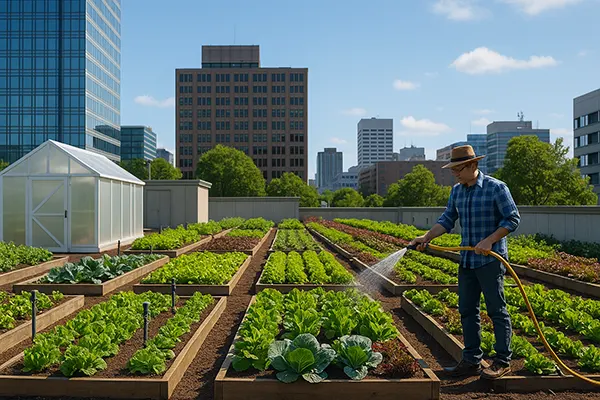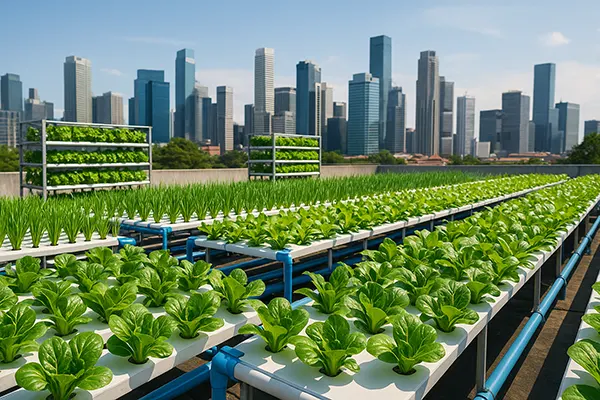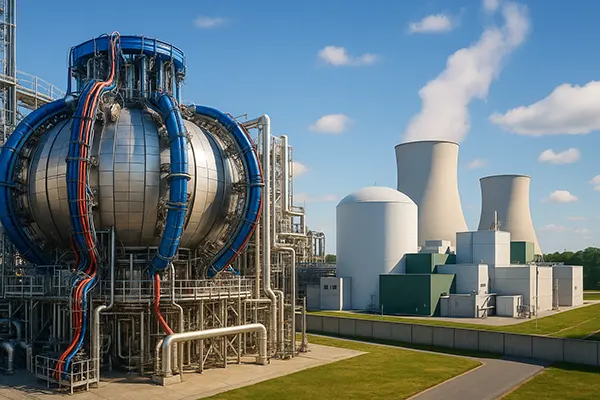Agrocubes: The Future of Urban Vertical Farming

Urban agriculture has undergone a major transformation in recent years, with vertical farming emerging as a practical and space-efficient solution. Agrocubes represent a cutting-edge innovation in this field, offering modular systems for growing food in dense urban areas. As cities continue to expand and environmental concerns rise, agrocubes offer a way to produce fresh produce locally, reducing food miles and preserving natural resources.
Technological Innovation Behind Agrocubes
Agrocubes are based on hydroponic and aeroponic systems, which allow plants to grow without soil. These compact structures utilise vertical stacking and LED lighting tailored to specific plant needs. Sensors constantly monitor humidity, temperature, and nutrient levels, automating the cultivation process and increasing crop yields.
This technology significantly reduces water consumption—by up to 90% compared to traditional agriculture. Additionally, agrocubes operate in a controlled environment, independent of weather or seasons, which makes year-round harvesting possible. This reliability is essential for meeting the growing demand for consistent, pesticide-free food.
The modular design also allows agrocubes to be scaled easily. Whether installed on rooftops, in warehouses, or even inside shipping containers, these units can adapt to various urban settings without requiring major infrastructural changes.
Impact on Food Security and Urban Planning
One of the most important advantages of agrocubes is their contribution to urban food security. In many cities, access to fresh produce is limited, especially in low-income areas. Localised vertical farming can shorten supply chains and improve access to nutritious food.
City planners are beginning to incorporate agrocubes into building designs. Some residential complexes and public institutions now feature integrated farming modules, turning formerly unused spaces into productive zones. This integration promotes sustainability and strengthens the local food economy.
Moreover, by decentralising food production, agrocubes reduce dependency on long-distance transport, lowering carbon emissions and contributing to climate resilience. These benefits align with broader urban sustainability goals.
Economic and Social Benefits
Besides environmental gains, agrocubes offer significant economic advantages. They create jobs in tech-driven agriculture, a field that’s rapidly growing. From technicians and agronomists to software developers, this innovation opens the door to new employment opportunities in urban areas.
For entrepreneurs, agrocubes provide a relatively low-cost entry point into agriculture. They eliminate the need for large tracts of land, and the modularity allows growers to start small and expand as demand increases. This democratises food production and fosters local business growth.
Socially, agrocubes promote community engagement. Educational institutions and non-profits use them to teach students and citizens about sustainable farming. Community-run agrocube projects can enhance urban cohesion and provide valuable life skills.
Reducing Inequality Through Local Agriculture
Urban farming through agrocubes can play a role in reducing inequality. In areas classified as “food deserts,” these units bring healthy produce closer to those who need it most. Community ownership models also ensure that the benefits are shared locally.
Moreover, agrocubes can supplement food banks and meal programmes, enhancing the quality of food offered. Some cities have begun incorporating these farms into social support strategies to address malnutrition and unemployment simultaneously.
With proper policy support, agrocubes can serve as tools for inclusive development. Governments and urban authorities should explore funding models and partnerships to maximise their societal impact.

Challenges and Future Outlook
Despite their promise, agrocubes face challenges. High initial investment and technical maintenance require expertise and funding. Energy consumption, especially from artificial lighting, remains a concern, though newer LED systems are improving efficiency.
There is also a need for regulatory adaptation. Zoning laws, building codes, and food safety standards must evolve to accommodate these new agricultural forms. Cross-sector cooperation is essential to create an enabling environment for expansion.
Nevertheless, the trajectory is promising. Advances in solar power, automation, and AI will make agrocubes more accessible and sustainable. As technology progresses, their integration into the urban landscape will likely become more widespread and standardised.
Agrocubes as a Component of Future Cities
In the coming years, agrocubes may become as common in cities as bike lanes or rooftop solar panels. They offer a path to decentralised, resilient food systems that complement traditional agriculture while addressing the unique needs of urban life.
Futuristic city models are already envisioning mixed-use buildings with integrated food production. This concept not only supports local economies but also improves air quality and biodiversity through green infrastructure.
Ultimately, agrocubes symbolise the intersection of technology, sustainability, and community. With continued innovation and public support, they could reshape how we grow and consume food in urban environments.







